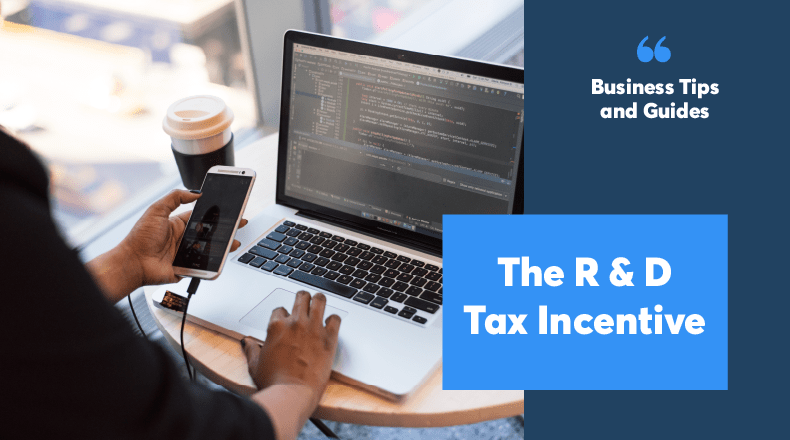Are you looking for more ways to optimise your company tax return through government grants and tax incentives? Stay tuned as we break down the ins and outs of the R&D tax incentive in this article. We will discuss the R&D tax incentive rate, using the R&D grant, the R&D tax incentive application process and more With this information you can make an informed decision about hiring an R&D tax incentive consultant to assist with your application.
What is the Research and Development tax incentive?
The Research and Development tax incentive provides companies with a tax offset for expenditure on eligible R&D activities. This incentive provides a credit on the eligible expenses in order to encourage business investment in innovation, research and development. The tax offsets can be applied annually, providing a predictable support system to encourage spending on R&D.
Put simply, you get a tax refund of 43.5% on eligible R&D expenses, making these expenses essentially discounted by 43.5%! This can be a major benefit for small businesses!
What types of items are claimable for the R&D tax incentive?
Indicators of whether your company conducts R&D include:
- Development of new products and services
- Development or extension of software systems
- Using or combining existing technologies in a unique way
- Improvement of operational efficiencies within your organisation
- Employ engineers or software developers
R&D Tax Incentive Rate
A 43.5% refundable tax offset is available for businesses with an aggregated turnover of less than $20 million per annum.
The R&D Tax incentive rate falls to a 38.5% non-refundable tax offset for all other eligible entities.
If you need assistance calculating your aggregated turnover and R&D expenses, accountants such as POP Business can help. We’ll also be discussing the benefits of using an R&D Tax Consultant below.
R&D Tax Incentive Application and Registration
If your company is looking to apply for the research and development tax incentive, you should register with AusIndustry within 10 months of your company’s financial year-end. The offsets must be claimed each year. For the year ending 30 June 2020, applications will close on 30 April 2021.
AusIndustry is part of the Australian Government’s Department of industry, Science, Energy & Resources. They are the specialist business program delivery division of this department.
The tax incentive is a self-assessment program
When applying for the incentive, you will conduct a self-assessment of your research and development activities against the eligibility requirements. The criteria you will assess your company with are under highlighted in the:
- Industry Research and Development Act 1986
- Income Tax Assessment Act 1997
This assessment of your company’s ability to meet the criteria for the program will then be reviewed by AusIndustry. The Government and ATO reserves the right to audit the activities you present as part of your registration and costs you claim are eligible.
Eligible Entities
In order to be eligible for the Research and Development tax incentive your company must:
- Be liable to pay income tax in Australia
- Conduct at least one activity that meets the definition of a core R&D activity
- Have eligible R&D expenditure over $20,000
If you have less than $20,000 in expenditure you can use a Research Service Provider (RSP) to conduct your R&D.
Core activities are:
- Experimental activities to generate answers in areas where there is a lack of knowledge, information or experience. These activities involve the application of principles of established science, including hypothesis, experimentation, observation and evaluation.
- Conducted to generate new knowledge. E.g.
- Improved materials
- Products
- Devices
- Processes
- Services
- You must claim at least one of these activities for your R&D Tax Incentive
Supporting activities are:
- Activities related to core activities or undertaken to support core activities.
- This can include activities that are directly related to producing goods or services.
- You can claim these R&D activities in addition to your core activities.
Ineligible Entities
- Individuals
- Corporate limited partnerships
- Entities exempt from income tax
- Trusts (with some exceptions)
What is the R&D Tax Incentive Application Process?
The application period for the R&D Tax Incentive is open for 10 months following the EOFY, closing on the 30th of April. While you can apply at any point within this window, it is best practice to submit your application as soon as possible. This way you consolidate your financial submissions to the ATO and can receive your refund immediately.
The following process outlines the typical application process conducted at the End of Financial Year.
- Spend money on R&D activities including eligible R&D expenditure throughout the financial year (July to June). Record this spending and the associated activities
- Liaise with your accountants & R&D tax incentive consultant throughout the financial year to maximise your claim
- Starting from year end (July 1) your R&D consultant can submit your application to AusIndustry
- If your application is approved, AusIndustry will notify you and the consultants (This will happen in July)
- Your R&D consultant will provide your accountant with the R&D tax schedule to include in your annual business tax return (This will happen in July)
- Your accountant will lodge your annual business tax return which will includes the R&D tax refund (This will happen in July)
- You will receive the R&D tax refund from the ATO usually within 10 to 14 business days.
Don’t worry if you just found out about the R&D Tax incentive and have already submitted your business tax return. You can still submit your R&D claim separately. Just make sure your supporting documentation and self-assessment is in order.
How to fund R&D
- Investment – this is the most common form of funding.
- Angel investors
- Private equity
- Venture capital
- Family and Friends
- ESIC Investors
- Investment – this is the most common form of funding.
- Personal director/founder contributions
- Bank loans (less common) – To maximise your chances of securing a bank loan for R&D you:
- Should be operating at a profit (including your R&D expenditure)
- Must prove you can meet repayments
- Bank loans (less common) – To maximise your chances of securing a bank loan for R&D you:
- R&D Lenders
R&D Grant
Whilst it is sometimes referred to as an R&D grant, the R&D tax incentive differs in nature from a government grant. Like an R&D grant, the R&D tax incentive was designed to stimulate productivity and innovation. However instead of a R&D grant cash injection, the R&D Tax Incentive reduces the amount of tax paid on R&D.
This can potentially result in larger savings than a cash injection, as the tax incentive can be claimed yearly. For small business, claiming the R&D tax incentive rate of 43.5% as a refundable offset can be a huge benefit for your business.
There are also other government grants and programs available that can be used to help fund your R&D expenses. For example, the SME Recovery Loan Scheme available until the end of 2021 could be used for R&D. (SME Loans are provided at the discretion of the banks and other participating lenders). Please note, if you use another grant to fund your R&D, adjustments may be required on your tax return. Learn more about these adjustments on the ATO website.
What happens if I want to access my R&D eligible monies throughout the year instead of waiting until July?
R&D lending is available. Lenders may provide loans at 80% of your eligible year to date R&D claim. You can draw down multiple times throughout the year as your expenses grow. The fees change between providers.
If you are looking for an R&D lender, POP Business has access to an affordable partner which offers a fixed fee rate of 1% per month for the loan. The R&D tax refund will be refunded to the loan provider who will deduct their fees from the refund. You will then be transferred the remainder.
R&D tax incentive consultant
While consulting a tax advisor or tax agent to prepare for your registration does not guarantee your eligibility, they can help assess your business against the criteria. Tax advisors such as POP Business can review your business structure, accounts, R&D expenditure and more. This will help make sure your supporting documentation is accurate and up to date to give you the best possible chance of success with your application.
When should I engage a R&D tax incentive consultant?
You should engage a consultant as early as possible. They need the supporting documentation and working papers provided in a certain way. This can include:
- Time sheets
- Logs for development
- Strategies to maximise the claim
Engaging with a consultant early can ensure your records and supporting documentation are accurate. They can also make sure you are aware of all the requirements ahead of time. This way you can ensure your team’s systems and processes are maximising your claim.
Get in touch with POP Business if you would like us to assist with your R&D application or simply review your eligibility. You can reach us via phone at 1300 180 630 or sign up here. POP also provides 30 minute consultations for $100 where we can assess your business situation and discuss future steps with your application.





